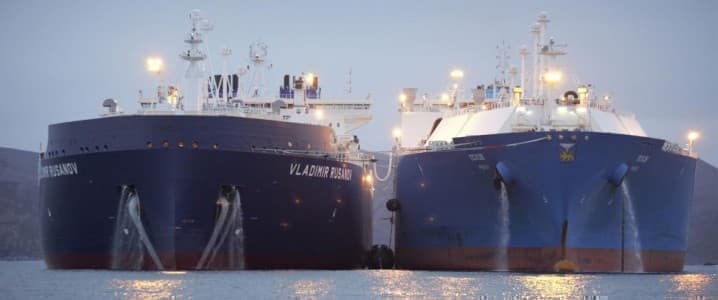Australia’s LNG operators are set to approve gas drilling and LNG infill projects worth more than US$10 billion this year in a bid to stay competitive in a very dynamic global marketplace
Australian liquefied natural gas (LNG) developers look ready to shrug off a difficult 2020 by significantly boosting spending on major new projects this year. Following slashed capital expenditure and deferred gas project sanctioning last year, Australia’s LNG operators are set to approve gas drilling and LNG infill projects worth more than US$10 billion this year.
New projects are set to help Australia to continue competing with Qatar and the United States to be among the world’s top three LNG suppliers.
Currently, Australia’s nameplate operating capacity of 88 million tons per annum (mmtpa) is the world’s largest.
This is set to change this decade, after Qatar approved last month the world’s largest LNG project in terms of capacity, North Field East Project (NFE), set to raise Qatar’s LNG production capacity from 77 mmtpa to 110 mmtpa. So Australia will be surpassed by Qatar and the U.S. in the coming decade as new liquefaction capacity is commissioned in Australia’s rival producers, Rystad Energy says.
Australia To Lose Top LNG Capacity Spot
Last year, Australia exported a record 78.0 Mt of LNG in 2020, up from 77.5 Mt in 2019, despite disruptions at the Gorgon, Wheatstone, and Prelude projects and despite the COVID-19-related destruction of demand in early 2020, Australian energy advisory firm EnergyQuest estimates.
So Australia’s exports last year are estimated to have surpassed Qatar’s production capacity to make Australia the world’s top LNG supplier.
Going forward, the massive increase of Qatar’s capacity through 2025 is set to eclipse Australia’s, but Australian LNG operators have turned optimistic about the future prospects of their projects and plan to sanction large developments and boost investments this year. They believe that global LNG demand—especially demand in Asia—will continue to soar in the coming years despite, or probably because of, the energy transition.
Start Trading On OPC Markets Today
Coal-to-gas switch from China to South Korea is set to boost gas demand as major Asian energy importers have said they would aim for net-zero, China by 2060 and Japan and South Korea by 2050.
Australia’s LNG developers are well aware of the ‘carbon-neutral LNG cargo’ drive in the industry and believe they are well-positioned to produce lower-emission LNG, as buyers are increasingly scrutinizing projects for their emissions impact and capacity to offset the emissions in the supply chain, including by carbon capture projects or carbon credits or taxes.
Australia’s LNG Operators Set For Major FIDs In 2021
The top LNG developers in Australia plan to return to spending this year and expect to sanction several major projects.
LNG backfill in Australia will be the driver of the expected US$11 billion in gas projects set for FID in Australasia this year, Wood Mackenzie said in December 2020.
Santos, for example, will be allocating more than six times higher capital to major growth projects this year compared to last year – US$542 million (AUS$700 million) in 2021, up from just US$85 million (AUS$110 million) in 2020, the company said in its 2020 results release last month.
“The Barossa LNG project remains on track for a final investment decision in the first half of 2021,” Santos said.
The targeted start-up for Barossa is for the first half of 2025. The Moomba Carbon Capture and Storage (CCS) project is FID-ready, awaiting eligibility for Australian Carbon Credit Units, Santos says, but some analysts think the Moomba project may not get the FID this year.
Woodside, for its part, targets FID on Scarborough and Pluto Train 2 in the second half of 2021, the company said in February, announcing the signing of a sale and purchase agreement for LNG with Germany-based RWE Supply & Trading, with the deal not subject to FID on any project.
WoodMac expects Santos to sanction the Barossa project and Woodside to approve the Scarborough to Pluto project this year.
Carbon Footprint Of LNG
Just like Santos, which plans the Moomba CCS project to offset emissions, Woodside is exploring opportunities for net-zero LNG production and trading. Related: What To Expect From The Upcoming OPEC+ Meeting
Commenting on the sale and purchase agreement (SPA) with RWE, Woodside’s Executive Vice President Development and Marketing Meg O’Neill said:
“The SPA also provides the opportunity for Woodside and RWE to explore the potential for carbon-neutral LNG production and trading.”
Australian LNG developers, like other LNG players around the world including Qatar Petroleum, are looking to add low-carbon or carbon-offsetting projects to their major new LNG developments, in order to attract increasingly ESG-conscious buyers.
“In 2021, look for steps towards increased transparency and consistent emissions measurement, and carbon regulation advancing in Australia,” said Wood Mackenzie senior analyst Daniel Toleman.
“We are confident that LNG, provided it is produced cost competitively and with increasingly low carbon, will experience sustained demand through the energy transition,” Woodside’s Senior Vice President Climate, Tom Ridsdill-Smith, told Angela Macdonald-Smith of The Australian Financial Review.
Global LNG Demand To Nearly Double By 2040
Australian LNG developers will have a growing market for LNG in the coming two decades as energy transition targets are set to boost demand for gas, especially in Asia, at the expense of coal.
Global LNG demand is set to nearly double from 360 million tons last year to 700 million tons by 2040, thanks to continued solid demand from Asia and a rise in gas use for powering hard-to-electrify sectors, Shell said in its annual LNG Outlook 2021 last week. The carbon neutrality goals of the major Asian economies are set to drive global LNG demand growth, 75 percent of which will come from Asia in the next two decades, Shell says.
By Tsvetana Paraskova for Oilprice.com
More Top Reads From Oilprice.com:
- Bloomberg’s Hottest Energy Picks For 2021
- Exxon Shocks As Oil Reserves Drop By A Third
- Bank Of America Expects Fastest Oil Price Rise In 30 Years


















